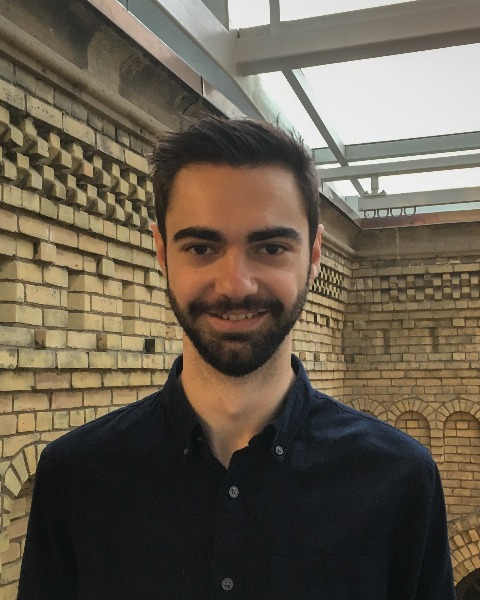Drug Delivery
(I-338) Core material and surface chemistry of Layer-by-Layer (LbL) nanoparticles independently direct uptake, transport, and trafficking in preclinical blood-brain barrier (BBB) models
.jpg)
Nicholas Lamson, PhD (he/him/his)
Postdoctoral Associate
Massachusetts Institute of Technology
Cambridge, Massachusetts, United States
Andrew Pickering (he/him/his)
Ph.D. Candidate
Massachusetts Institute of Technology
Cambridge, Massachusetts, United States- JW
Jeffrey Wyckoff (he/him/his)
Research Specialist
Massachusetts Institute of Technology, United States - PG
Priya Ganesh
Undergraduate Researcher
Massachusetts Institute of Technology, United States - EC
Elizabeth Calle
Visiting Scientist
Massachusetts Institute of Technology, United States - JS
Joelle Straehla
Clinical Investigator
Massachusetts Institute of Technology, United States - PH
Paula Hammond
Professor
Massachusetts Institute of Technology, United States
Presenting Author(s)
Co-Author(s)
Primary Investigator(s)
Millions of patients suffer from neurological diseases and brain tumors, but current treatments for these maladies provide only symptom management or minor improvements in survival. Development of new strategies is hindered by the blood brain barrier (BBB), which excludes 95% of newly developed candidate drugs from exiting systemic circulation and entering the brain. To address the major need to deliver therapeutics across the BBB, nanoparticle drug delivery vehicles provide a particularly promising strategy. However, there is no standardized in vitro model of the BBB to conduct high-throughput screening of nanocarrier uptake across the barrier; it is not known how to best characterize interactions at the nano-bio interface between the cells and drug delivery vehicles, nor how well disparate in vitro assays predict nanoparticle behavior in complex organisms.
Materials and Methods::
Here, we construct a combinatorial, layer-by-layer electrostatically assembled library of nanoparticles (LbL-NPs) encompassing three core materials – liposomes, poly(lactic-co-glycolic acid, and polystyrene – and five rationally selected outer layer surface chemistries – carboxymethyldextran, hyaluronate, polyaspartate, polyglutamate, and polysialate. We apply this library to evaluate three high-throughput methods for assessing BBB uptake and transport of nanomaterials: flow cytometry, monolayer association, and Transwell transport using the immortalized human cerebral microcapillary endothelium cell line hCMEC/D3, then use immunofluorescence confocal imaging to compare localization of different nanoparticles into subcellular compartments. In parallel, we examine nanoparticle behavior in in vitro fluid flow chip models, as well as BBB permeability to the nanomaterials using intravital imaging in mice.
Results, Conclusions, and Discussions::
We demonstrate that core material stiffness is the primary determinant of the amount of nanomaterial taken up by each of the in vitro models but that the surface chemistry dictates the pathways through which each formulation traffics intracellularly. In the transwell model, some outer layers – especially polyglutamate – predestine nanoparticles for rapid degradation in lysosomes, which we confirm using confocal imaging of the LAMP1 lysosomal marker. We also demonstrate that both stiffness and surface chemistry govern accumulation into the brain in vivo, but that certain surface chemistries, especially hyaluronate, confer transport advantages in vivo that are predicted only by the flow-based in vitro models, likely resulting from cell surface binding properties. Taken together, our data show that flow cytometry, monolayer association, and Transwell transport each provide advantages and caveats for library screening of nanomaterial uptake across the BBB, that the choice of model is dependent on the intended application of the nanomaterials undergoing development, and the importance of in vivo screening for cell and tissue interactions that may not be recapitulated in vivo.
Acknowledgements (Optional): :
This work is supported by Cancer Research UK grant number C42454/A28596, and we would like to acknowledge use of core facilities, especially the Microscopy, Flow Cytometry, High Throughput Sciences, and Integrated Genomics and Bioinformatics cores, in the MIT Koch Institute Swanson Biotechnology Center, which is supported by the Koch Institute Core Grant P30-CA14051 from the NCI. N.G.L. is also supported by a postdoctoral fellowship from the Ludwig Center at MIT’s Koch Institute for Integrative Cancer Research
References (Optional): :
